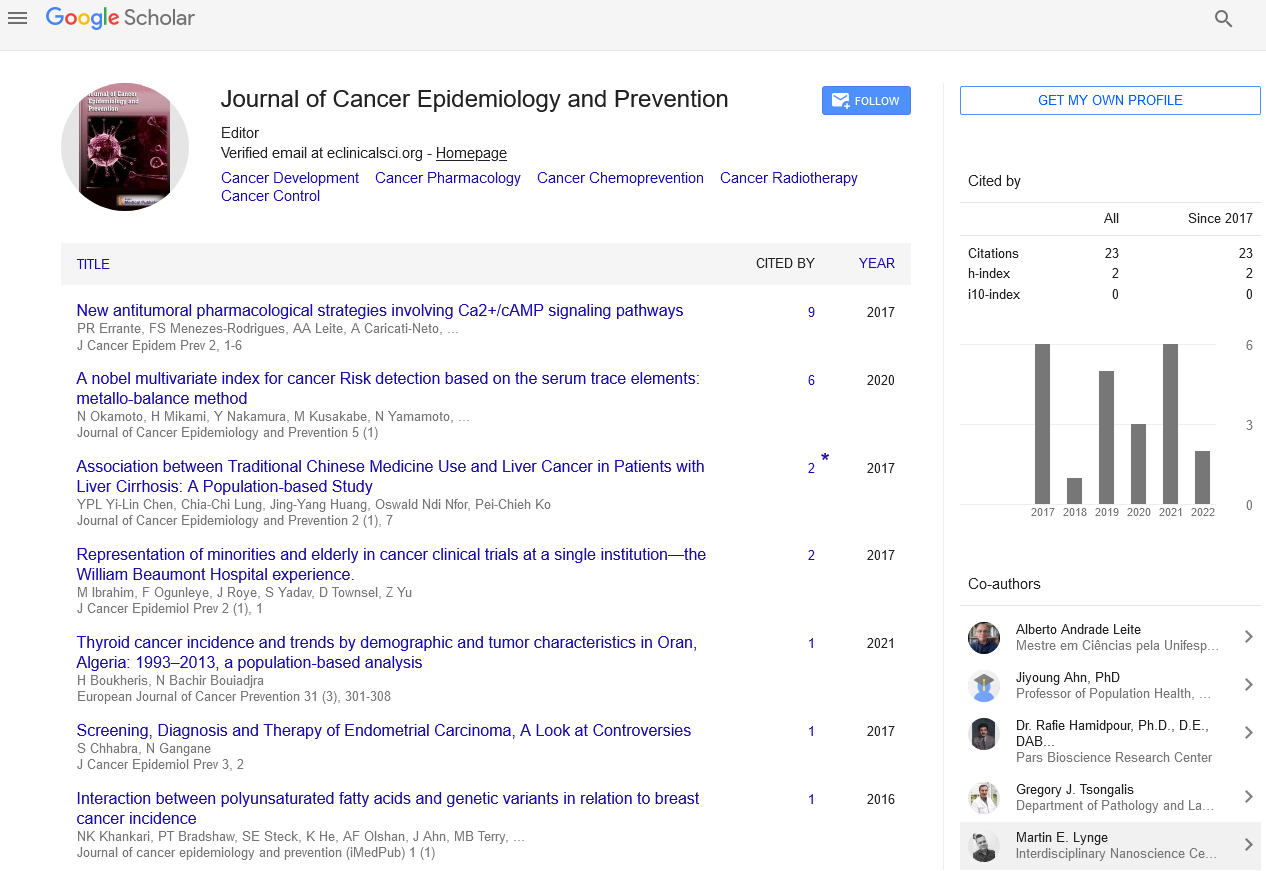Short Communication - (2023) Volume 8, Issue 1
An Overview of Lymphoma Cancer and how it Spreads inside the Body
Yousong Peng*
Department of Radio Oncology, Universitiy of Texas, USA
*Correspondence:
Yousong Peng,
Department of Radio Oncology, Universitiy of Texas,
USA,
Email:
Received: 31-Jan-2023, Manuscript No. IPJCEP-23-15871;
Editor assigned: 02-Feb-2023, Pre QC No. IPJCEP-23-15871 (PQ);
Reviewed: 16-Feb-2023, QC No. IPJCEP-23-15871;
Revised: 21-Feb-2023, Manuscript No. IPJCEP-23-15871 (Q);
Published:
28-Feb-2023, DOI: 10.36648/IPJCEP.23.08.005
Introduction
The WHO recommends that the lymphocyte population of the
lymphoma be taken into consideration when classifying it. As
a result, lymphoid cell-derived neoplasms that are precursors
and mature are distinct. Non-Hodgkin lymphomas make up the
vast majority of mature lymphoid neoplasms. Due to the fact
that they frequently involve lymphoid tissue, mature histiocytic
and dendritic cell neoplasms have historically been regarded
as mature lymphoid neoplasms. Similarly that lymphomatous
meningitis can spread to the mind; lymphoma can likewise
spread to the focal sensory system. Cancer is staged before and
after a diagnosis and treatment [1].
Description
The stage of the disease has an impact on the best course of
treatment for a lymphoma patient. When staging HL and NHL,
the Ann Arbor staging system is frequently utilized. Stage I is a
localized disease that only affects one group of lymph nodes;
stage II is lymphoma that affects two or more groups of lymph
nodes. At stage III, the lymphoma has reached groups of lymph
nodes on both sides of the diaphragm; Stage IV also refers to
the spread to tissue that is not lymphatic. The letters S for the
spleen and H for the liver, for instance, indicate that different
organs are involved. The letter E stands for extra-lymphatic
involvement, and the letters B and A denote whether or not
B symptoms are present. Positron emission tomography has
recently been shown to have a significant impact on prognosis
when performed shortly after starting chemotherapy. This
makes it conceivable to evaluate an individual’s reaction to
chemotherapy since PET action stops quickly in responders. After
two cycles of ABVD chemotherapy, 83% of people who had
negative PET scans were disease-free at three years, while only
28% of people who had positive PET scans were. This prognostic method enhances FFP gauges based on the seven common
elements. To see if PET-based risk-adapted response can be
used to change chemotherapy early in patients who are not responding,
numerous trials are currently underway [2-4]. In patients
with Hodgkin’s lymphoma, it has little impact on progression-
free survival whether interim PET scan results are negative
or positive. If the adjusted result were measured, negative interim
PET scan results may increase progression-free survival.
The overall survival rate for those with negative interim PET
scan results is probably much higher than for those with positive
interim PET scan results. Hodgkin lymphoma has a bimodal
curve for the number of cases, in contrast to other lymphomas,
where the number of new cases per year increases with age;
that is, it affects two distinct age groups the most frequently:
People under the age of 55 and young adults, despite the fact
that these peaks may differ slightly depending on nationality.
Overall, men are more likely to have it, with the exception of
the variant of nodular sclerosis, which is slightly more common
in females. Hodgkin lymphoma affects 2.7 out of every 100,000
people worldwide and accounts for slightly less than 1% of all
cancers.
Conclusion
The majority of people believe that lymphoma is treatable.
However, a patient’s outlook can be impacted by a variety of
factors, the most significant of which are the type and severity
of the diagnosis as well as the degree of early detection of the
cancer. Hodgkin lymphoma is a cancer that can spread quickly
throughout the body and is relatively aggressive. Despite this,
it is also one of the cancers that are easiest to treat.
Acknowledgement
None.
Conflict Of Interest
The authors declare that they have no conflict of interest.
References
- Matasar MJ, Zelenetz AD (2008) Overview of lymphoma diagnosis and management. Radiol Clin North Am. 46(2):175-98.
[Crossref] [Google Scholar] [PubMed]
- Grommes C, DeAngelis LM (2017) Primary CNS lymphoma. J Clin Oncol. 35(21):2410-2418.
[Crossref] [Google Scholar] [PubMed]
- Minson A, Dickinson A (2021) Glofitamab CD20-TCB bispecific antibody. Leuk Lymphoma. 62(13):3098-3108.
[Crossref] [Google Scholar] [PubMed]
- Shah NN, Fry TJ (2019) Mechanisms of resistance to CAR T cell therapy. Nat Rev Clin Oncol. 16(6):372-385.
[Crossref] [Google Scholar] [PubMed]
Citation: Peng Y (2023) An Overview of Lymphoma Cancer and how it Spreads inside the Body. J Cancer Epidemiol Prev. 08:005.
Copyright: © 2023 Peng Y. This is an open-access article distributed under the terms of the Creative Commons Attribution License, which permits unrestricted use, distribution, and reproduction in any medium, provided the original author and source are credited.

